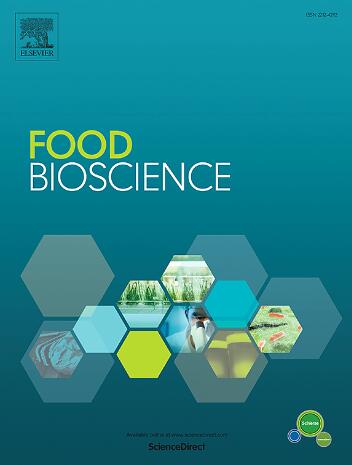Nurturing with science: Alternative solution for human milk oligosaccharides through bioproduction techniques and their emerging applications in infant nutrition
IF 4.8
1区 农林科学
Q1 FOOD SCIENCE & TECHNOLOGY
引用次数: 0
Abstract
Human Milk Oligosaccharides (HMOs) are bioactive carbohydrates found in human milk that play a crucial role in infant growth and health. However, due to several factors, such as maternal health conditions, lactation insufficiency, and socio-economic barriers, breastfeeding is not always feasible. This has led to the need for the synthesis of alternative HMOs to bridge the nutritional gap for non-breastfed infants. First, this review explains various physiological roles of HMOs in the overall growth and development of infants, followed by extraction of alternative oligosaccharides from multiple natural sources, including the milk of animals such as cows, goats, and camels, as well as from plant and marine sources. However, this method is limited by low yield, high purification cost, and significant compositional variability. Thus, advanced biotechnological processes for industrial-level production, such as microbial fermentation and enzymatic and chemical synthesis, including purification and characterization techniques, are discussed in this review. This review also evaluates each production method, emphasizing the industrial feasibility, scalability, and cost-effectiveness. The advantages and challenges of each large-scale production method are analyzed, followed by a discussion of emerging advancements in biotechnology and methodologies for improved HMO production. The review also highlights the clinical trials conducted in infants to assess the safety and efficiency of synthesized HMOs, as well as about the regulatory approvals that govern their addition in infant formulas and other supplementary products. Finally, various potential applications of alternative HMOs, like infant nutrition, pharmaceuticals, functional food, and emerging applications, are highlighted.
科学培育:通过生物生产技术及其在婴儿营养中的新兴应用,为母乳低聚糖提供替代解决方案
母乳寡糖(HMOs)是一种在母乳中发现的生物活性碳水化合物,对婴儿的生长和健康起着至关重要的作用。然而,由于产妇健康状况、哺乳不足和社会经济障碍等若干因素,母乳喂养并不总是可行的。这导致需要合成替代性卫生保健组织,以弥补非母乳喂养婴儿的营养缺口。首先,本综述解释了HMOs在婴儿整体生长发育中的各种生理作用,然后从多种天然来源中提取替代低聚糖,包括奶牛、山羊和骆驼等动物的牛奶,以及植物和海洋来源。然而,这种方法受到产率低、纯化成本高和显著的成分可变性的限制。因此,本综述讨论了用于工业生产的先进生物技术工艺,如微生物发酵、酶和化学合成,包括纯化和表征技术。本文还评估了每种生产方法,强调工业可行性、可扩展性和成本效益。分析了每种大规模生产方法的优势和挑战,然后讨论了改善HMO生产的生物技术和方法的新进展。该审查还强调了在婴儿中进行的临床试验,以评估合成hmo的安全性和有效性,以及管理在婴儿配方奶粉和其他补充产品中添加它们的监管批准。最后,重点介绍了替代hmo的各种潜在应用,如婴儿营养、制药、功能食品和新兴应用。
本文章由计算机程序翻译,如有差异,请以英文原文为准。
求助全文
约1分钟内获得全文
求助全文
来源期刊

Food Bioscience
Biochemistry, Genetics and Molecular Biology-Biochemistry
CiteScore
6.40
自引率
5.80%
发文量
671
审稿时长
27 days
期刊介绍:
Food Bioscience is a peer-reviewed journal that aims to provide a forum for recent developments in the field of bio-related food research. The journal focuses on both fundamental and applied research worldwide, with special attention to ethnic and cultural aspects of food bioresearch.
 求助内容:
求助内容: 应助结果提醒方式:
应助结果提醒方式:


